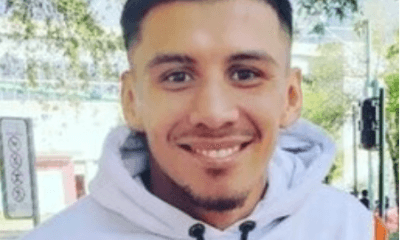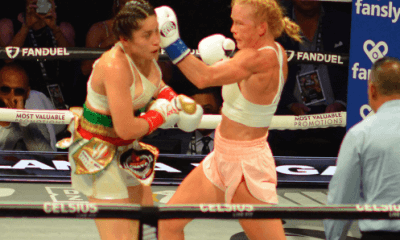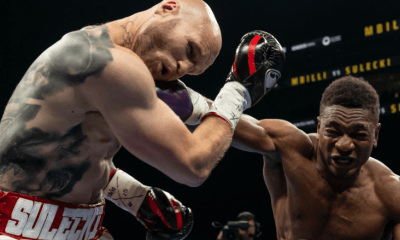Featured Articles
With Valentine’s Day on the Horizon, let’s Exhume ex-Boxer ‘Machine Gun’ McGurn
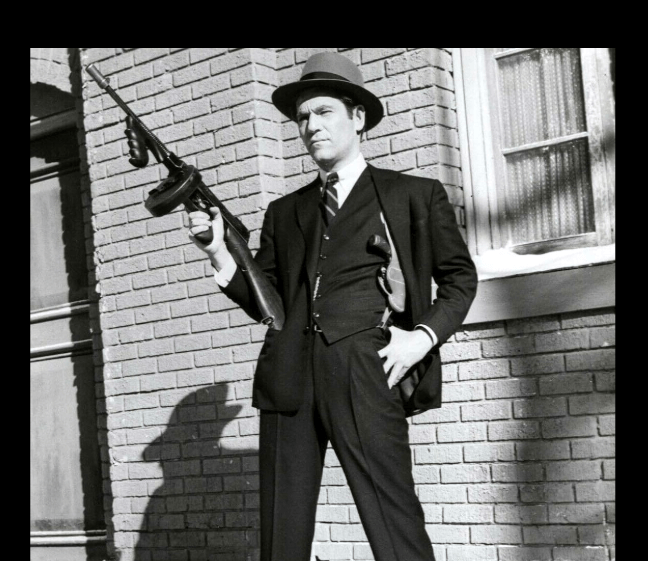
With Valentine’s Day on the Horizon, let’s Exhume ex-Boxer ‘Machine Gun’ McGurn
Feb. 14, which this year falls on a Friday, is Valentine’s Day, more formally St. Valentine’s Day. It’s a day identified with romance, but for students of organized crime, it summons up an image of a different sort. On Valentine’s Day in 1929, at a warehouse in the Lincoln Park district of Chicago, seven men were lined up against a wall and murdered in cold blood by four intruders with machine guns and shotguns. The infamous St. Valentine’s Day Massacre was the most sensational news story during the Prohibition Era when many of America’s cities, most notably Chicago, were roiled by deadly turf wars between rival bootlegging factions.
It shouldn’t surprise us that a former boxer was one of the alleged perpetrators. During the Prohibition years, bootleggers were well-represented among the ranks of boxing promoters and managers. Philadelphia’s Max “Boo Boo” Hoff reportedly had the largest boxing stable in the country. In New York, Owney Madden was purportedly the brains behind the consortium that controlled future heavyweight champion Primo Carnera.
That brings us to Jack McGurn, but first a little context. Prohibition was the law of the land from 1920, when the Volstead Act took effect, until 1933 when the ill-conceived law was repealed. Prohibition did not fetter America’s thirst for alcoholic beverages but arguably encouraged it. Confirmed beer drinkers didn’t stop drinking beer because it was illegal. Restaurateurs at high-end establishments didn’t stop selling cognac and brandy; they just did it more discreetly. Speakeasies became fashionable.
Big money awaited entrepreneurs willing to risk arrest by flouting the law, either by opening distilleries and breweries or importing alcohol with Canada the leading supplier.
In Chicago and environs, circa 1929, two of the kingpins of the bootlegging trade were “Scarface” Al Capone and George “Bugs” Moran. They were bitter rivals. The warehouse at which the seven men were assassinated housed some of Moran’s delivery trucks. The victims were members of his gang.
Al Capone wasn’t directly involved. On Feb. 14, he was in Florida where, among other things, he was finalizing arrangements to host a bevy of A-list sportswriters at his lavish Miami Beach estate; the scribes were coming to town to cover the heavyweight title eliminator between Jack Sharkey and Young Stribling. But the hired guns, who stormed into Moran’s warehouse at 10:30 on a snowy Valentine’s Day morning, were presumed to be working for Capone and the one henchman whose name stood out among the usual suspects was Jack McGurn. He had purportedly saved Capone’s life on two occasions by intercepting would-be assassins out to kill his boss and shooting them dead. Of all his underlings, Capone was said to be especially fond of McGurn.
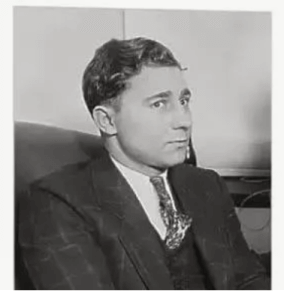
Machine Gun Jack McGurn
It had long been the custom of Jewish and Italian boxers to adopt Irish-sounding ring names. McGurn was born Vincenzo Gibaldi in 1902 in the Sicilian seaside city of Licata and lived in Brooklyn before moving with his widowed mother to Chicago. He had his first documented prizefight in 1921. The bout was held on a naval training ship, the U.S.S. Commodore. Prizefighting was then illegal in the Windy City, a residue of the malodorous 1900 fight between Terry McGovern and Joe Gans, but the ship was docked outside the Chicago city limits.
McGurn would have five more documented fights, the last against Bud Christiano on a strong card in Aurora, Illinois. Their six-round bout was the semi-windup. The main go was a 10-round contest between bantamweights Bud Taylor, the Terre Haute Terror, and Memphis Pal Moore, both of whom are enshrined in the International Boxing Hall of Fame.
By law, these were no-decision fights with wagers resting on the opinion of one or more ringside reporters. McGurn really had no business in the same ring with Christiano, an 84-fight veteran who had won two of three from future world lightweight title-holder Jimmy Goodrich. He took the worst of it, but was still standing at the final bell. And that was that. After only six pro fights, he hung up his gloves to pursue other endeavors and, in time, when his name appeared in the newspapers, it invariably appeared as Machine Gun Jack McGurn, the reference to the newfangled Thompson Machine Gun, colloquially the Tommy Gun, a tool with which McGurn was said to be very proficient.
The police found McGurn holed up in a Chicago hotel where he was staying with his girlfriend, Louise Rolfe, a 22-year-old “professional model and cabaret entertainer” with a 5-year-old daughter from a previous relationship that was being raised by her mother.
Louise testified that on the day of the massacre, they were in bed until noon. She said that she and McGurn had seldom left the room during their 13-day stay, having their food brought up from the hotel’s kitchen.
Louise held tight to her story and the police never did have sufficient evidence to charge the ex-boxer in connection with the crime. However, whenever the authorities were frustrated in sending a perp to prison, they had other weapons at their disposal to get their pound of flesh.
In the case of Scarface Al Capone, it was the 1913 law that authorized a federal income tax. The feds had enough circumstantial evidence to show that Al hadn’t been paying his fair share of taxes and succeeded in removing him from society. (After serving almost eight years in federal prisons, mostly Alcatraz, Capone returned to civilian life a sick man and passed away in Florida at age 48.)
In the case of Machine Gun Jack McGurn and his paramour, later his wife, the wedge was the Mann Act of 1910.
The Mann Act, most famously used to waylay heavyweight champion Jack Johnson, was aimed at brothel-keepers and immigrant flesh peddlers but was worded in such a way that it could be deployed when there was no commerce involved. It prohibited the interstate transportation of “any woman or girl for the purpose of prostitution or debauchery, or for any other immoral purpose.” (The law remains on the books but has been watered-down to decriminalize sexual activity between consenting adults.)
The feds spent thousands of hours digging up evidence to show that the couple had violated the Mann Act. They eventually got hotel receipts showing that they had registered as Mr. and Mrs. under assumed names at hotels in Florida and Mississippi during a motor trip down south. Jack was sentenced to two years in Leavenworth and Louise to four months in the county jail, but their convictions were later overturned by the Illinois Supreme Court.
What comes around, goes around, goes the saying, and it figured that Machine Gun Jack McGurn would die a violent death. The ex-boxer met his maker at 1 a.m. on Feb. 15, 1936, at a second-floor bowling alley in Chicago where he was fatally shot by two gunmen who opened fire as his back was turned. There were at least 20 people present said the story in the Chicago Tribune, but “the wall of silence, traditional among the gangsters and the people who know them, was erected high and tight.”
Was McGurn’s murder retaliation for the St. Valentine’s Day Massacre? The answer appears to be a resounding “yes.” Had the deed happened before the stroke of midnight, it would have happened on a St. Valentine’s Day, the seventh anniversary of the infamous event.
The police found a crumpled comic Valentine’s card next to McGurn’s body. On the front of the card were the figures of a man and a woman in their underwear. The verse inside read:
You’ve lost your job, You’ve lost your dough;
Your jewels and cars and handsome houses;
But things could still be worse you know
At least you haven’t lost your trousers.
Was this card intentionally left there by the assassins? We don’t know, but the view from here (pardon the wisecrack) is that if one were to receive a card on Valentine’s Day bearing this poem, perhaps it would be best not to leave the house.
Postscript #1: Jack McGurn’s wife, the former Louise Rolfe, routinely referenced in the press as his blonde alibi, continued to have her name pop up in the news after he died. In February of 1940, police found a gun used in a burglary in a drawer in her apartment. In 1943, she was arrested on a charge of disorderly conduct after police found her in the company of a 25-year-old Army deserter.
Postscript #2:
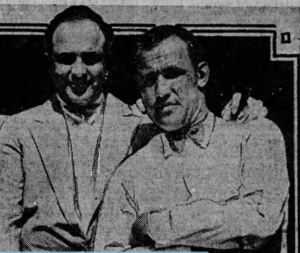
Al Capone refused to pose for photographs, but made an exception for his friend Jack Sharkey, the future heavyweight champion. Sharkey is pictured on the right next to Capone in this 1929 photo.
****
The Mob Museum, officially the National Museum of Organized Crime and Law Enforcement, opened 13 years ago on Feb. 14, 2012 in an old three-story building in downtown Las Vegas that was originally a federal courthouse. So, each Valentine’s Day is a special occasion at the Mob Museum, an anniversary celebrated with special events, free admission for Nevada residents, and steep discounts for tourists. (On other days of the year, a single admission during peak hours is $34.95, but there are always discounts available on-line.)
A permanent display is a reconstructed portion of the wall where the seven victims were murdered. The garage where the killings happened was demolished in 1967, but before it was torn down a collector rescued many of the bricks, some with blood-stained bullet holes, which the Mob Museum acquired. Other artifacts on display this Friday will be the two Tommy Guns used in the assault, a one-day loan from the Berrian County Sheriff’s Department in Michigan which recovered the weapons from the home of a bank robber.
For the record, there is also a mob museum, called the Gangster Museum of America, in Hot Springs, Arkansas.
A recognized authority on the history of prizefighting and the history of American sports gambling, TSS editor-in-chief Arne K. Lang is the author of five books including “Prizefighting: An American History,” released by McFarland in 2008 and re-released in a paperback edition in 2020.
To comment on this story in the Fight Forum CLICK HERE
-

 Featured Articles3 weeks ago
Featured Articles3 weeks agoAvila Perspective, Chap. 330: Matchroom in New York plus the Latest on Canelo-Crawford
-

 Featured Articles1 week ago
Featured Articles1 week agoVito Mielnicki Jr Whitewashes Kamil Gardzielik Before the Home Folks in Newark
-

 Featured Articles4 weeks ago
Featured Articles4 weeks agoAvila Perspective, Chap 329: Pacquiao is Back, Fabio in England and More
-

 Featured Articles3 weeks ago
Featured Articles3 weeks agoOpetaia and Nakatani Crush Overmatched Foes, Capping Off a Wild Boxing Weekend
-

 Featured Articles2 weeks ago
Featured Articles2 weeks agoCatching Up with Clay Moyle Who Talks About His Massive Collection of Boxing Books
-

 Featured Articles3 weeks ago
Featured Articles3 weeks agoFabio Wardley Comes from Behind to KO Justis Huni
-

 Featured Articles4 weeks ago
Featured Articles4 weeks agoDelving into ‘Hoopla’ with Notes on Books by George Plimpton and Joyce Carol Oates
-

 Featured Articles1 week ago
Featured Articles1 week agoMore Medals for Hawaii’s Patricio Family at the USA Boxing Summer Festival



